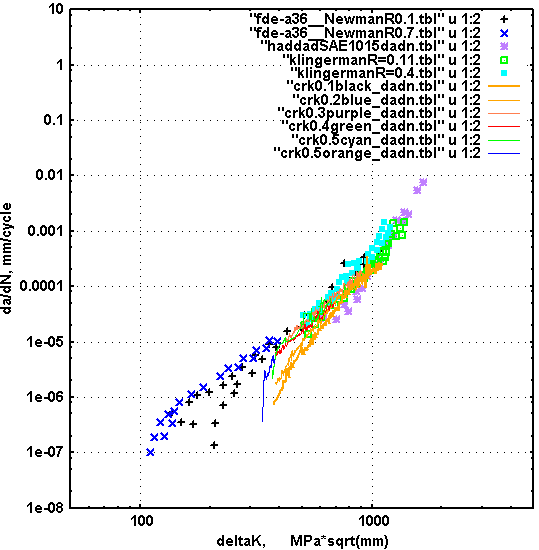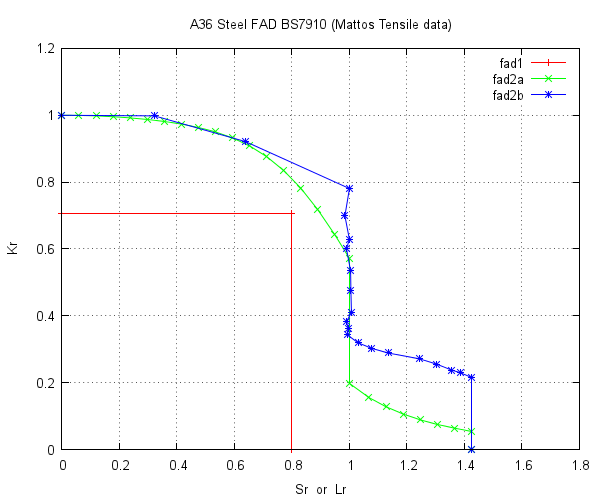Crack Propagation Programs and Articles
Author: FAConle
Created: July 28 2013 Updated: Aug.2013, Aug.2020

Introduction:
Although the logic of a crack propagation simulation program is fairly simple,
(some explanation available here:)
the implementation is often complex given the large number of basic specimen/crack
geometries and their stress intensity equations (as per BS_7910).
It was found easier to create a seperate simulation program unit for each crack
type than to incorporate all types into one program.
The simulation programs available here incorporate the "Push-Down" list or
"Last in First out" cycle counting procedure to account for material memory in
variable (or constant for that matter) amplitude loading. The cycle counting
method when applied to a single channel of load or strain history produces the
same count results as the "Rainflow" or "Reservoir" cycle counting method.
Warning:
Please be aware that simulation speeds are quite fast (i.e. a million peaks
and valleys take a fraction of a CPU second ) and that with the output
for each halfcycle option, your disk may fill up quite quickly; best to try with
a known short life load history or set the block max repeat variable in file
pdprop.env to something small.
It should also be mentioned that the simulations run FAD computations and crack
initiation estimates using a Kt=1.8 (weld). The Kt value can be changed as desired
and the FAD program requires a tensile test data file for the material.
Example Output:
(in Github click on the "Raw" button to download)
Crack Propagation Simulation Software:
Presently the following simulations are available:
- Full width surface crack in a plate
( in folder "PlateLongSurfFlaw" )
- Elliptical surface crack in a plate
( PlateSurfFlaw )
- Internal elliptical surface crack in pipe
( PipeInSurfFlaw )
- Center thru crack in a plate
( PlateThruFlaw )
- Edge thru crack in a plate
( PlateEdgeFlaw )
- Rod surface crack
( RodSurfFlaw )
- Others will be available in future or on request...
There are also a number of programs common to all of the above and these are
located in the Github site folder:
https://github.com/pdprop/pdprop/tree/Master/CleanPdprop
(Click on "Raw" to download a file ) Version 1
or for Version 2 go to:
https://github.com/pdprop/pdprop2
and download the *tar/gz file.
Use the script "Allcompile" to compile the fortran programs for your system,
for a single program compile see the compile line at the top of each source file.
The term Clean in "CleanPdprop" just implies that there is a minimum of files in the folders.
All the necessary routines to run the simulations are available in a Linux "tar" file
and are also located here as
pdprop.tar.gz vers 1 (Warning 11Mb file!) updated Sep.22 2015
or for Version 2:
cleanPdprop2.tar.gz vers 1 (9Mb file!) updated Aug.10 2020
Probably the best course of action to take is to download the tar file and create the folder tree.
You can then use which ever simulation you want. For details read the README files.
FAD Failure Assessment Diagram Creation from Tensile tests:
(Note that these programs are also avaible in the pdprop.tar.gz
download file mentioned above)

